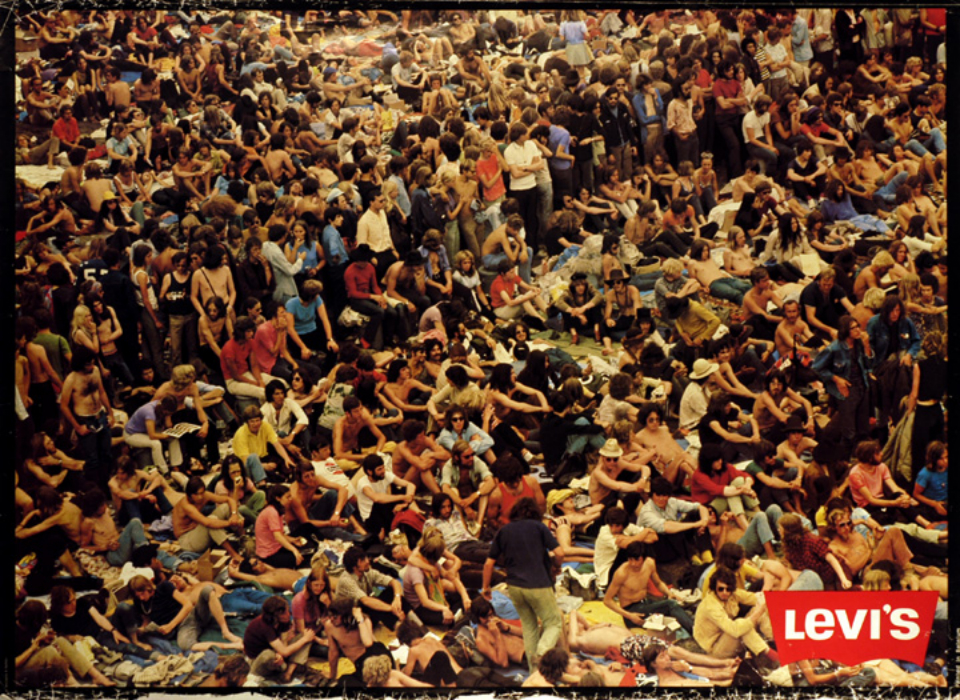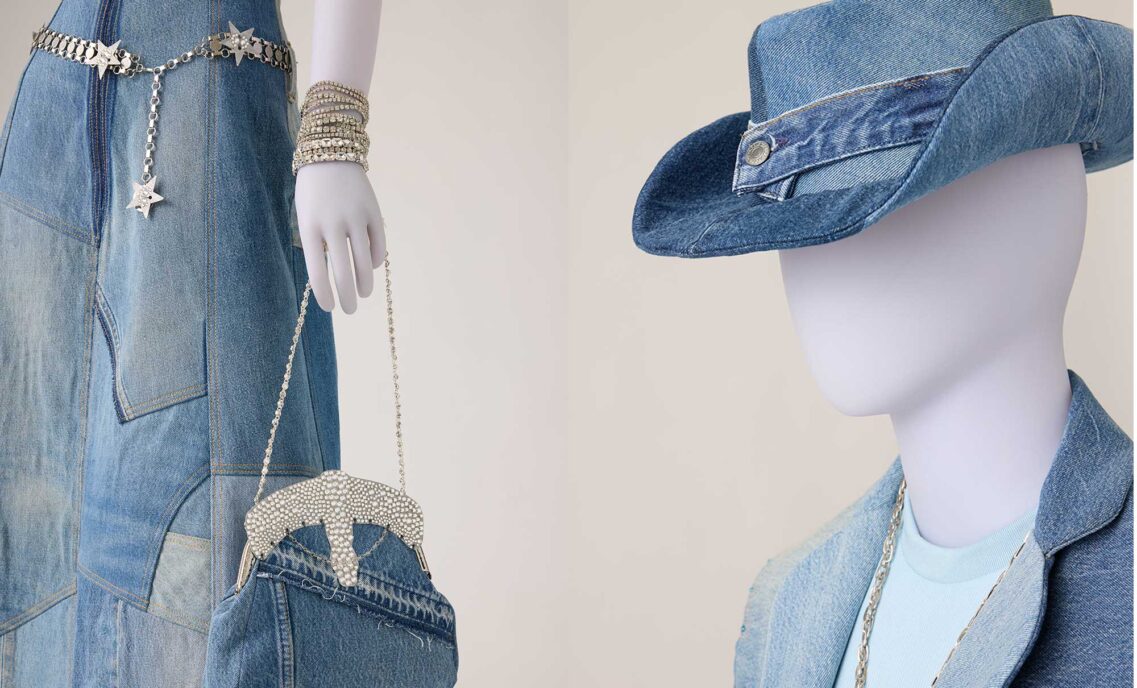Denim and the Rise of a Counterculture
This week marks the 45th Anniversary of Woodstock, a momentous moment for music, culture, and fashion. From August 15-17, 1969, 33 musical acts and nearly half a million attendees came to Bethel, New York, for what was originally coined, “An Aquarian Exposition: Three Days of Peace and Music.”
While Woodstock was famously considered to be clothing-optional, and the abundance of mud became as legendary as the acts themselves, most attendees arrived clad in counterculture youth’s textile of choice: denim.
A Symbol of Baby Boomer Rebellion
Beginning in the 1960s, counterculture sensibilities had begun making their way into advertising and music, and the youth of the era were one of the first groups to adopt faded blue denim into their wardrobe. Styles ranging from wide leg embroidered bell-bottoms to ultimate bad boy Peter Fonda’s tattered blues in the landmark counterculture film Easy Rider defined the uniform of this iconic generation, and Levi’s® denim in particular became a visible emblem of Baby Boomer rebellion.
At the time jeans were still seen as informal and associated with the working-class. Therefore, they served as a symbol of social equality and middle-class youth’s disobedience against materialism and social norms. The culture also embraced denim’s easy-to-care-for nature, and the garments allowed for an expression of individuality and freedom—whether transformed into cut-offs, rolled, ripped, tattered, or colorfully embroidered.
Bell-bottoms, the silhouette most often associated with the “hippie revolution” came into mainstream fashion in the 1970s. In the ‘60s, however, they were still seen as non-conformist.
Levi’s began selling bell-bottoms on March 11, 1969—just in time for Woodstock. So, you can bet that more than a few pairs were spotted at the concert. The festival became not only a defining moment in rock and roll history, but in fashion history, essentially giving birth to “festival style” — flower crowns, fringed tops, and of course, denim.
The Rockstar Uniform
It wasn’t just the massive crowd that sported Levi’s throughout the unforgettable weekend. Denim is a common uniform for rock stars, and those who graced the stage at Woodstock were no exception.
Janis Joplin, who took the stage at 2 a.m. on Saturday night, had been described by her campus newspaper as someone who “goes barefooted when she feels like it, [and] wears Levi’s to class because they’re more comfortable.”
Jefferson Airplane, who closed out Saturday night’s lineup (between 8-9:40 a.m. Sunday morning!) had, several years prior, remixed their hit “White Rabbit” into a version titled “White Levi’s” for radio spots promoting seawater-bleached white Levi’s, a style popular amongst surfers.
A Celebration of Peace and Music
Besides celebrating its legendary music, we remember Woodstock as a demonstration of peace and harmony. Despite how unprepared the organizers were for the massive crowds, the weekend was violence-free. Everyone from the National Guard to local restaurants to townspeople provided extra food and water for attendees.
The concert has now ascended to mythical status—an enduring symbol of love, happiness and progress, and a defining milestone for music, fashion and humanity. It is an event we’re proud to have lived, and represents the same forward-thinking social progress that we remain committed to today.







